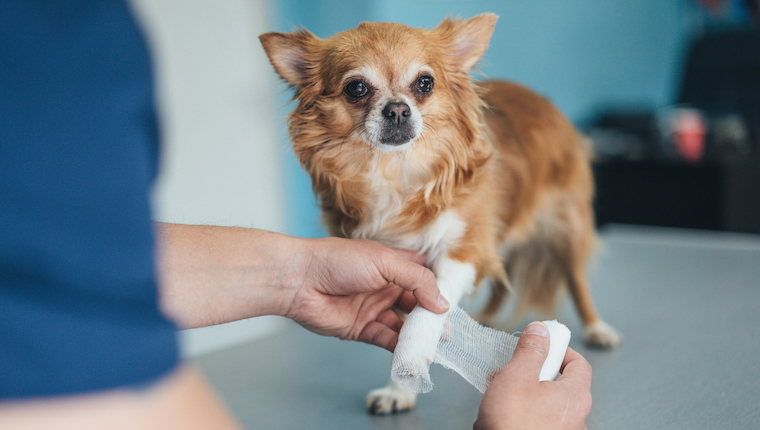Cold weather often puts a spring in the step of young, frisky dogs. But for older dogs with painful joints, falling temperatures make any movement difficult. Frequently dismissed as a normal part of a dog’s aging process, joint stiffness may be a sign of osteoarthritis or degenerative joint disease (DJD).
5 Signs Your Dog May Have Joint Paint
Dr. Jeff Werber, DVM, created a list of 5 questions that could indicate that your dog needs to see a veterinarian for chronic joint pain:
- Is your dog slowing down?
- Is your dog having a tougher time manipulating stairs?
- Does your dog make the jump onto the couch or bed with less vigor and ease than he used to?
- Would your dog now rather have a 5 minute walk than his usual 20 minute walk?
- Does your dog seem sore first thing in the morning?
Diagnosing a dog’s joint issues will give you a plan to save mobility and reduce pain, especially during cold weather. DJD destroys the cartilage surrounding the joints, causing the joints to become inflamed and limiting a dog’s range of motion. Small dogs tend to develop DJD in their spine and knees, while large dogs are often affected in their hips or shoulders. The disease is progressive, but with consistent exercise and medication a dog can live relatively comfortably with the effects of arthritis.
Exercise in Cold Weather
Cold weather makes joints with DJD even more stiff and painful. Going for walks twice a day helps reduce inflammation in arthritic dogs, and is strongly recommended by veterinarians. You might not like the idea of a brisk winter walk but to maintain strength and keep your dog mobile, it’s important to keep muscles moving.
Your dog may be more comfortable outdoors in a sweater or coat. Start with short walks; the prescribed exercise is more about regular activity at least twice a day than it is about distance.
Treatments for Joint Pain
In addition to regular exercise, your veterinarian may recommend a canine anti-inflammatory medication, a pain medication and physical therapy. Your dog may be offered hydrotherapy or laser treatment at the vet’s office, and you may be given some gentle massage techniques to use with your dog at home.
Keeping your dog at optimal weight will help delay the onset of osteoarthritis and DJD. Carrying extra pounds is particularly tough on joints; maintaining overall health will help your older pup stay happy and active.









